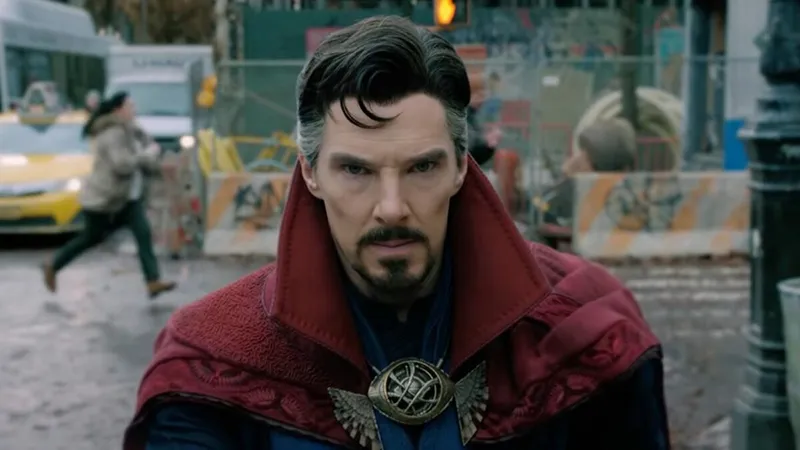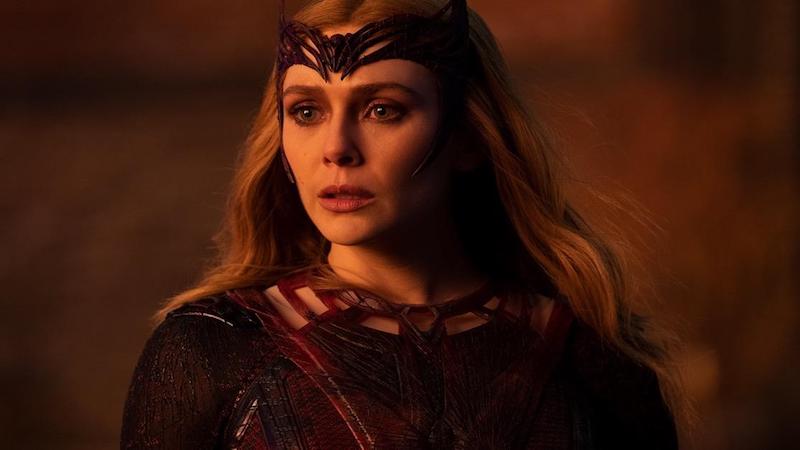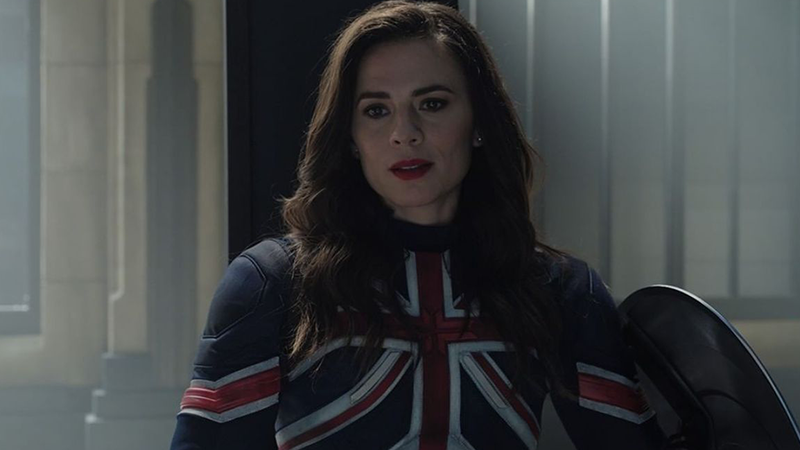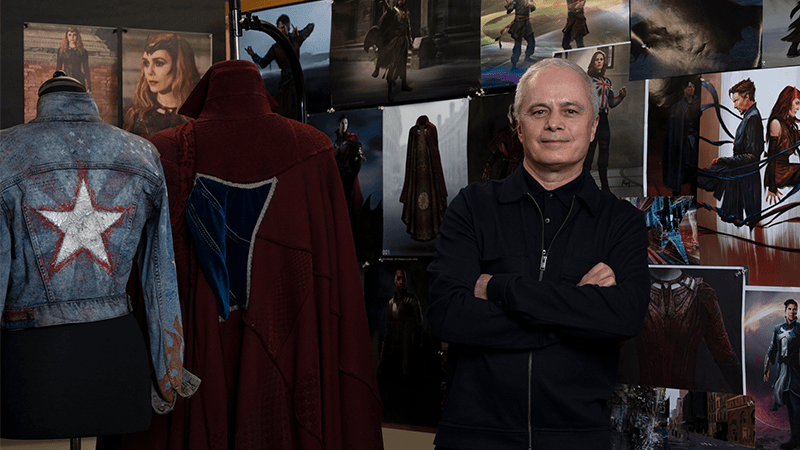ComingSoon spoke to Doctor Strange in the Multiverse of Madness Costume Designer Graham Churchyard about designing such iconic costumes, showing character development through what they wear, and how the visuals in superhero films have changed.
“In the film, the MCU unlocks the Multiverse and pushes its boundaries further than ever before,” reads the synopsis. “Journey into the unknown with Doctor Strange, who, with the help of mystical allies both old and new, traverses the mind-bending and dangerous alternate realities of the Multiverse to confront a mysterious new adversary.”
Doctor Strange in the Multiverse of Madness is now available on Digital and will be released on 4K, Blu-ray, and DVD on July 26.
RELATED: Interview: Xochitl Gomez Reflects on Doctor Strange 2, Entering the MCU

Spencer Legacy: Doctor Strange as a character has decades of vibrant costumes to take inspiration from. How did you decide where to take that inspiration from with that huge library?
Graham Churchyard: Alexandra Byrne’s costumes were phenomenal and they were a hard act to follow because, having watched the movie a number of times when I first got the job, I didn’t appreciate actually how phenomenally detailed all those pieces were. We had to take the language that was created, because they spent a long time creating this Kamar-Taj sort of language of costumes. I’m going to say that I kind of helped carry that forward, but in Kamar-Taj in the first movie, it was a sort of place where you drank tea. Yeah. Doctor Strange went through some stuff, but it is a place of learning and drinking tea and the serenity that took up mostly that sort of part of a Zen temple that was somewhere between Google and a kind of Buddhist learning center.
Which is why they were all wearing sneakers and some kind of sportswear. They wanted to interject in that movie that it wasn’t all robes, that there was some sportswear used. Having gotten the pages [for[ Multiverse, we knew that everyone had to be battle-ready. So it was just a way of moving on. So for the whole of the background, all the Kamar-Taj students, I moved them out of these flowing robes into this originally created armor. So I made all that from scratch, everything, and created a different … so Sam [Raimi, director of Multiverse of Madness] was very keen on them being different. There was infantry and artillery with the big cannons, and then there were arches with the Eldritch magic bows. So he wanted to make very clear on what each different part of Kamar-Taj was doing with the battle against Scarlet Witch.
And so that was just a blast for me to then put aside everything that had been made before and create something that looked more like battle-ready, armored costumes with a kind of far Eastern spin. The thing I loved about it most — I didn’t realize until we shooting, because the rooftops are big quad with all these big flagstones and all these pieces, which are very formed costumes — that they all look like chess pieces that were moving around. That was actually quite a thrill for me. And I never said that to anyone else, but that was part of it. But when you’re saying about looking back on Doctor Strange, well, the cloak didn’t change, right? We couldn’t change the cloak because it has a personality and it does amazing things.
But the disciple costume that he wears in that movie that he finally ends up in as Doctor Strange … [at] the very end of Doctor Strange, he appears at the Sanctum window wearing a master’s costume because he has been upgraded. And then for some reason, in Infinity War and Endgame, he still wore that costume. And in fact, when we started on Multiverse, Kevin said we really have to upgrade him because he’s now worn this five or six times. Well, it was going to be five times, and then with the switcheroo with Spider-Man [No Way Home], because of COVID, he ended up wearing his Endgame costume yet again in Spider-Man. I’s a crazy world. You just have to look at the influences and the comics and the studio and where they want to take stuff next time is all part of the process too.

How’d that progress go with Scarlet Witch, because she also shows through her costume a growth of character, but it’s a very different type than Doctor Strange’s. What was that process like?
At the end of WandaVision, you see Mayes Rubeo’s fabulous costume for a fragment of time. And Sam Raimi, with the script and the influences that were in the script that she was in possession of the Darkhold and she’d been corrupted by, it meant that that corruption had had some effect on her clothing as well as her. So it was like this multiversal mold had crept over her body and started to corrode and chip away and disintegrate the costume. So we took the WandaVision costume and rebuilt it, because we had to remold it with all of those defects and decay into the castings on the body. And I felt the cold shoulder was … I’m just going to say like, not too romantic, but just not sinister enough. Sam didn’t think it was sinister enough. So then I created this sleeve, again this multiversal mold sort of creeping across that whole part of her shoulder just to encompass her and make her more one.
On the other hand, with America Chavez, this is her first film, and as a character in the comics, she hasn’t been around as long. How did you go about designing her?
I looked at many of the comics and they’re very adult and America is in her twenties or something. They just seemed too grown-up to launch a 14 year old into the MCU [with], and the studio were very mindful of that. So we kind of dialed it back into something that was less dramatic or exposing in that way and more kind of building the character to show that … so the coat, the denim jacket, the Levi jacket went through a lot of different versions until we ended up landed with the denim jacket with the star on the back. And when you watch the movie and you see her first appear in it and you see the star, it’s like … it was always like that.
I probably did 20 different stars and backs to her. Some of them had Day of the Dead symbols on some of them, [or] had her two moms on. And the inspiration was that was that she was this emo traveling through the multiverse and maybe in her room at night, she was writing poetry and her thoughts and fears onto her coat, just [as] a sort of just a way of outletting her experiences. And I mean, I did that when I was a kid, and I know people that did and they’re in and out of fashion as well. Just the idea that people wear a lot of pins and stuff that are trying to show a statement about a political thing or whatever, but I wanted to put her life story into her jacket.
So it’s all Spanish poetry. So we wrote all these things and we translated them. So a lot of the stuff in there is all to do with Day of the Dead and some Portuguese witchcraft, just to sort of blend the kind of Latin cultures, because she’s a witch, right? So we had to introduce the idea of wherever she’s going next in the MCU, and she’ll end up wearing something else that launches her, but everything’s in there if you can get that close to it.

With the Illuminati, these are characters that people have wanted to see for a long time in different forms. It’s like designing a whole new Avengers team. What was that like?
Oh my God. The job was like so tough, and then they say, “Hey, we’re introducing the Illuminati.” And it’s just like, “what?! A load of superheroes? How am I going to do that?” And so they came up with this wish list. So that wishlist did keep changing somewhat.
Reed Richards and Black Bolt were … there were so many that were talked about, which were on different people’s wishlists and it’s all to do with what Kevin [Feige, head of Marvel Studios] and the MCU and what the next phase is and what’s happening there. But Captain Carter was there from the get go, and then we finally got Hayley Atwell in that part. Yeah, we made that costume from scratch. Did I already say that I worked on Marvel [films]. So for First Avenger, I made that first costume for Chris Evans with a whole team. There was probably, like, 20 of us back then, compared to Multiverse, which was like 170 … 160 or 170 in the crew, very big crew, even by any of our standards here, that’s a very, very big crew. And the making department was vast leather workers, people embroidering all day, people sewing all day, people printing fabric, dying fabric, aging costumes. I mean, it just goes on and on and on. People buying stuff, people looking for the fabric, you know, and then, you know, it’s just like endless, endless work.
You mentioned previous projects too. You’ve worked on projects all the way back to Tim Burton’s Batman. How was the visual language of superhero movies changed in all that time?
Interesting. When it was shot on 35 mill and seen at a cinema, everyone had a fuzzy old kind of VHS … [it] was a different thing, but I suppose people’s eyes adjust to different things. I mean, the fact that this was shot in IMAX [and] you can screen it on Disney+ in an enhanced version from IMAX is amazing. And the Blu-ray 4k will be quite incredible to see all of that detail. But how it’s changed … the technology has changed. We still do it a bit, but the clay sculpting was something that we always did, and clay sculpting is becoming less and less. Now we did a bit of clay sculpting on Multiverse, but it’s done as a quick 3D sketch in front of you, and then you translate that into a computer model. But without 3D modeling, we’d be stuck. And if we only had that back in the day, like on Tim Burton’s thing, they were all play sculpted, all of them.










